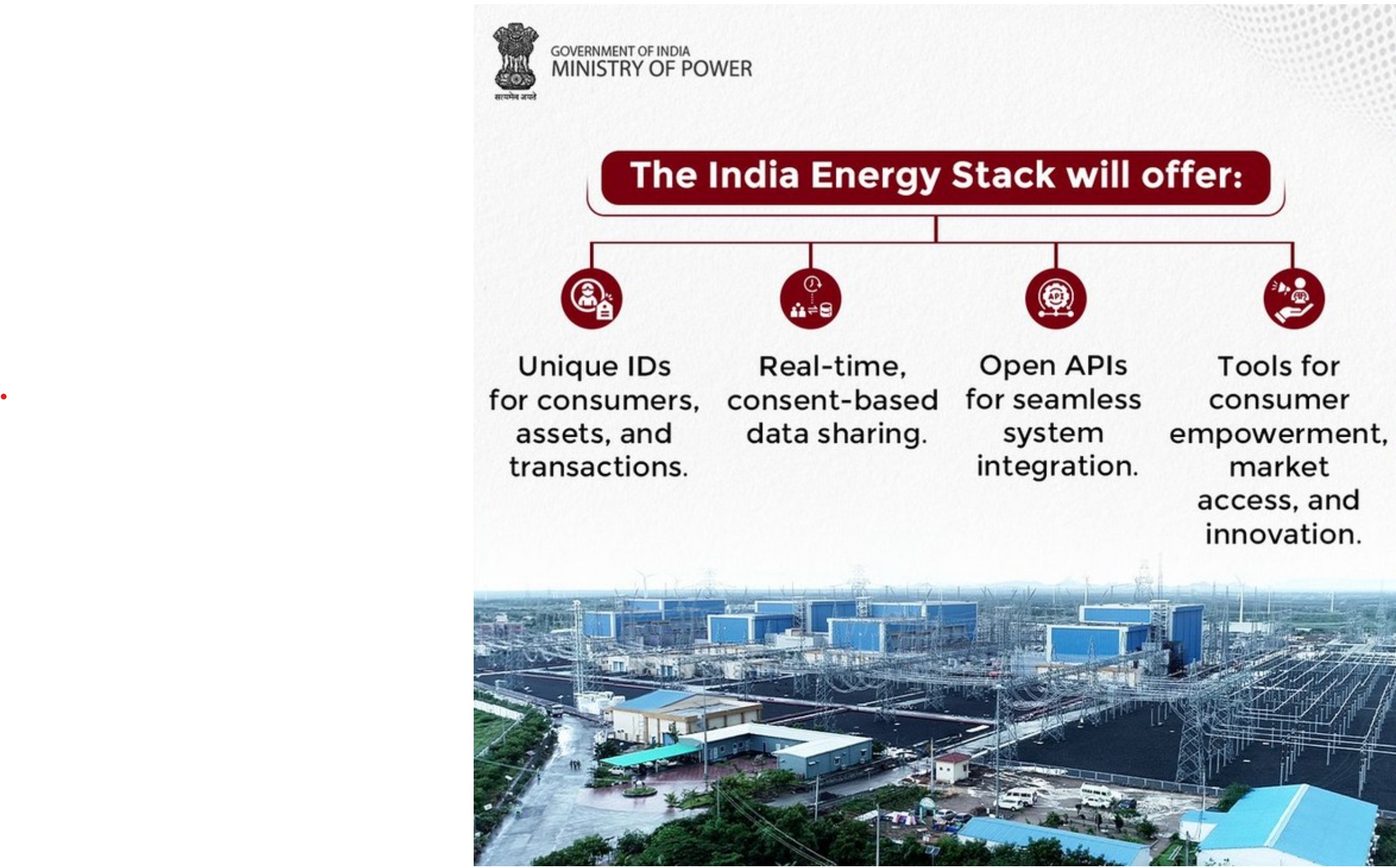India Energy Stack (IES)

- 02 Jul 2025
In News:
In a transformative move aimed at digitising India’s power sector, the Ministry of Power has announced the conception of the India Energy Stack (IES) — a Digital Public Infrastructure (DPI) initiative designed to build a unified, secure, and interoperable digital ecosystem across the energy value chain.
This effort aligns with India’s goals of achieving a $5 trillion economy and meeting its Net Zero commitments, while addressing the growing complexities of a rapidly evolving energy landscape marked by renewables, electric vehicles, and consumer-centric markets.
What is India Energy Stack (IES)?
The India Energy Stack is envisioned as a standardised, open, and secure digital infrastructure to:
- Streamline operations in the power sector
- Empower consumers with access to real-time, consent-based data
- Integrate renewable energy into the national grid
- Enhance the efficiency of Distribution Companies (DISCOMs)
The initiative is spearheaded by the Ministry of Power, drawing inspiration from successful DPI models like Aadhaar (identity) and UPI (digital payments).
Core Features of IES
- Unique IDs: Assigned to consumers, assets, and energy transactions
- Real-time Data Sharing: Consent-based access for secure and accountable data exchange
- Open APIs: Enabling seamless integration across utility systems and third-party applications
- Consumer Empowerment Tools: Market access platforms, billing transparency, demand response options, and innovation support
- Interoperability: Standardised protocols for all stakeholders in the electricity ecosystem
Implementation Strategy
1. Proof of Concept (PoC) – 12 Months
A year-long pilot phase will test the India Energy Stack using real-world scenarios in partnership with selected utilities and DISCOMs.
2. Utility Intelligence Platform (UIP)
The UIP is a modular, analytics-driven application built on the India Energy Stack. It aims to:
- Provide real-time insights to utilities, policymakers, and regulators
- Enable smart energy management
- Enhance decision-making for grid operations and consumer services
3. Pilot Regions
The PoC will be conducted in collaboration with DISCOMs in:
- Mumbai
- Gujarat
- Delhi
Institutional Framework
- A dedicated Task Force has been established by the Ministry of Power.
- It includes experts from:
- Technology domain
- Power sector operations
- Regulatory bodies
- The Task Force will guide:
- System architecture design
- Pilot implementation
- National scale-up strategy
Expected Outcomes
- India Energy Stack White Paper for public consultation
- UIP deployment in pilot cities
- National roadmap for phased rollout of IES across all states and UTs
- Improved grid stability, energy access, and transparency in service delivery
- Enhanced integration of renewable energy sources into the mainstream grid
Significance for India’s Power Sector
The India Energy Stack has the potential to be a game-changer for the power sector, enabling:
- Modernisation of legacy systems
- Digital empowerment of consumers
- Efficient energy trading and billing
- Decentralised and democratised power governance
As India undergoes its green energy transition, IES will serve as the digital spine supporting clean, accountable, and consumer-centric power distribution.
